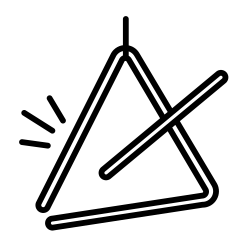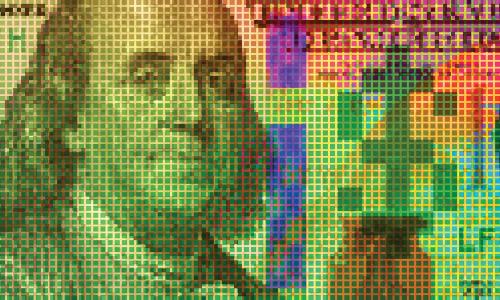In early 2020, the COVID-19 pandemic struck national economies like a hammer. As the disease spread, workers went home, businesses were empty, and economic indicators crashed. Now, five years later, the U.S. economy looks in many ways like it did pre-pandemic, with GDP back on to the pre-pandemic trend and unemployment down to around 4% after spiking to over 10% in 2020. On this episode of the Brookings Podcast on Economic Activity, Brookings Senior Fellow Louise Sheiner is joined by Harvard University’s James Stock to discuss his new paper, “Recovering from COVID,” in which he and coauthor Mark Watson of Princeton explore the amazing economic recovery from the pandemic recession and the implications for future policymaking.
- Listen to the Brookings Podcast on Economic Activity on Apple, Spotify, YouTube, or wherever you like to get podcasts.
- Learn about other Brookings podcasts from the Brookings Podcast Network.
- Sign up for the podcasts newsletter for occasional updates on featured episodes and new shows.
- Send feedback email to [email protected].
Transcript
[music]
EBERLY: I’m Jan Eberly, the James R. and Helen D. Russell Professor of Finance at Northwestern University.
STEINSSON: And I’m Jón Steinsson, Chancellor’s Professor of Economics at the University of California, Berkeley.
EBERLY: We’re the co-editors of the Brookings Papers on Economic Activity, a semi-annual academic conference and journal that pairs rigorous research with real-time policy analysis to address the most urgent economic challenges of the day.
STEINSSON: And this is the Brookings Podcast on Economic Activity, where we share conversations with leading experts on the research they do and how it will affect economic policy.
EBERLY: The economic recession that followed the rapid spread of COVID-19 in 2020 was the deepest and shortest in American history. The same is true in many other countries around the world. Considerable research has been done on the causes of this economic downturn.
Today’s conversation focuses on a new BPEA paper, “Recovering from COVID,” by Jim Stock of Harvard University and Mark Watson of Princeton, that provides a fresh perspective on the COVID recession and the remarkably quick recovery that followed.
On today’s episode, Jim will join Louise Scheiner, the Robert S. Kerr Senior Fellow in Economic Studies at Brookings, to discuss their research.
STEINSSON: The Nobel Prize winning economist Robert Lucas once argued that all business cycles are alike. Lucas had a knack for making simple and controversial claims about the economy that would spur a lively debate. This was one of those and not everyone agreed.
But in a 2012 BPEA paper, Stock and Watson concluded, to many people’s surprise, that the Great Recession of 2007 to 2009 was in a certain sense the same as earlier recessions, just larger. Now the COVID recession really did seem quite different from earlier recessions, so it would be even more surprising if Stock and Watson were to conclude again that it was just like earlier recess. In fact, they don’t. The COVID recession seems to have been different, even statistically significantly different.
EBERLY: So, with that, let’s turn it over to Louise and hear from Jim about this paper.
SHEINER: Thank you, Jan and Jón, and thanks for joining me today, Jim. I’m excited to discuss the new research.
[2:30]
STOCK: Thank you, and it’s a pleasure to be here.
SHEINER: Great. So, first thing I’d like to talk about: why you took this research project on. There was a lot of research on the economic impacts of COVID during the pandemic, including two BPEA additions when you were co-editor. Why do you think it was important to look back at this episode now?
[2:48]
STOCK: Well, let me first say, since you mentioned the two BPEA editions that I helped co-edit with Jan Eberly, that was really an exciting moment, and I’m really glad that BPEA stood up to the moment and recovered all of those papers. There was some terrific work in there, and it really helped show how the economics community was standing up and doing its work, doing its job in the moment.
Why look at this now? Why don’t we just say, okay, been there, done that? Well, there’s an awful lot that we still have to learn. I think there’s a couple of reasons. Most of the work that the economists did on COVID was really in the moment. And of that work, most of it was focused on very microeconomic aspects.
So, for example, there were papers on various aspects of the initial stimulus plan, pandemic unemployment insurance, what was going on in the labor market, all of those changes, documenting, spending shifts and so forth in the time. And there was some macroeconomic research that was very important that was focused on the recession and especially the crash of March and April.
There has been remarkably little work on the recovery. So, it turns out that the recovery, that is the recovery that started after the cyclical trough in April of 2020, the recovery that then has proceeded and that we’re still in is just as interesting as the recession was. The recovery is marked – and we’ll talk about this in more detail – by some very unusual behavior, and there’s a lot to learn from that.
Why study it now? It takes a while for the data to come in, and now we finally have the ability to look at it in retrospect.
SHEINER: Great. So let’s talk about the findings of the new paper. How was this recession and recovery like previous ones and how was it different?
[4:33]
STOCK: Well, it was similar to previous ones in that it went across the entire economy. Everybody felt it, every sector felt it, that was what was going on, and that was certainly true in the collapse. But frankly, after that, the differences are much more striking than the similarities.
We can talk a little bit about how that was documented, but it was really different. We point out five different things in the paper that were really remarkably different in this recession and recovery. I would say the entire COVID business cycle was different. So first, in the recession, it was really short. It was only two months long, the shortest on record, and it was super deep. The unemployment rate rose from 3.5% in February of 2020, so full employment or even beyond full employment. And it rose in just two months to 14.8%. And there’s reasons to think that that actually was an underestimate because of the difficulty of processing some of the aspects of the data when all of the processing is remote. An enormously short and steep decline. So, decline that was normally measured in months was actually being measured in days as the economy collapsed.
A second feature that was just really different was the sectoral dispersion. So normally, the service sector is the hedge against recession. You’re just trundling along, people still need services: they still go to the doctor’s office, they still will go to see movies and things like that. It was actually the opposite here: services were strongly cyclical, really collapsed during the COVID recession, and then were quite slow to recover during the recovery, whereas goods, which are normally more cyclical – normally, you lose your job or you’re in a recession, you’re not going to buy that refrigerator, you’re going to not buy that TV – it was actually quite the opposite during this recession. Shoot, you are stuck at home, you’ve got nothing to do, you can’t go out to a restaurant, so the amount of goods that were purchased actually rose substantially after the initial contraction.
So, a third thing that was different is that we had exceptionally strong fiscal policy. So, the one way to measure it, we had three big stimulus plans by the time they are all over in roughly five quarters of activity from 2020 Q1 to 2022 Q2. To 2021 Q2, the debt to GDP ratio had risen from about 106% to 122%, so 12 percentage point increase in the debt-to-GDP ratio in just a handful of quarters. So that’s really a big fiscal shock.
A fourth thing is that the recovery itself had really weird dynamics. So, it had a super fast first stage, which was about the first six months where the unemployment rate dropped really sharply and quickly. Then there was this hiatus or pause where we had a normal rate of recovery for about the next five months. And then things just took off again starting in around March or February of 2022 for the next 10 months. And then the whole thing was over. Unemployment rate was down to the fours, the low fours within maybe two years of the initial shock. So it was a very strange dynamic.
I guess the fifth thing I would mention is that for the first time in 60 years, GDP actually returned to its pre-recession trend lines. So, we have a plot in the paper, it’s a little hard to describe this without the plot, but the plot in the paper shows that in every previous recession if you draw a trend line over the previous business cycle, you’d never get back except during COVID.
SHEINER: Yeah, I mean I think that’s one of the most interesting findings of the paper and this understanding that previous recessions really have these very long-term impacts on output and COVID didn’t.
So, you’re talking about a recession and particularly a recovery that sounds totally different and of course, there were lots of things happening: the virus and then the vaccines and all this stuff, and so you just say like when you look at the data, it’s just so different than what we’ve seen before.
But you note in the paper that the pre-COVID macroeconomic dynamics were actually, they never really went away. They’ve come back, but they were actually never really went away and they were just masked by this, all this very different stuff. So how do you know that? What do you say that?
[8:54]
STOCK: I think that was one of the things that actually got us, we’re particularly interested, we didn’t really know the answer to that. So, I guess the way we kicked it around was did the economy get long COVID? Do we have changes in the macro dynamics that are persistent as a result of this?
The way we went about this – let me nerd out for just a second – the way went about this was we estimated what’s called a dynamic factor model and that’s a way to summarize the behavior of a large number of economic time series in a very low dimensional way. So, for those of you who are familiar with principal components, we use that. And the pre-COVID models, dynamic factor models, work extremely well in historical data. This is a very well-established macroeconomic fact. They just completely fell apart during COVID, simply didn’t work. And that’s because of these weird behaviors, these super-fast dynamics, the fact that goods expanded, whereas services contracted. It doesn’t come close to fitting.
What we did is we layered on top of it a COVID factor and a COVID shock, and we allowed that COVID shock to interact with the conventional macroeconomic shocks. And that’s, on the one hand, if you’re having the COVID shock that’s going to affect economic activity by changing demand patterns and economic activity can feed back into COVID because of if you’re out, going out to restaurants, then that’s going to result in more contacts. So we estimated a COVID shock.
I think from our perspective, the coolest thing empirically in the data was that even though we estimated this COVID shock solely from economic data from 150 economic time series using no epidemiological data, it actually came out looking like the death series. So, if you look at COVID deaths, it really tracks with our COVID economic shock, but with some attenuation, and the attenuation comes from things like understanding how to take avoidance measures, wearing masks, that sort of thing, and also just from weariness from COVID and COVID fatigue.
So we’re able to estimate that model. And then, the thing about that is that we have underlying it, the economics, the economic behavior from the pre-COVID period. And then you can ask, well, empirically, has that changed? And it turns out that at least based on the data that we have in hand so far, it just doesn’t seem as though there’s any changes in the underlying macro dynamics once that COVID shock has disappeared.
SHEINER: So, I’m just going to ask you about that again, just for clarity for people who may not quite understand what you’re doing. When you say you looked just at the economic data, so you didn’t put in COVID deaths, you didn’t put in anything specific. You just said, what underlying shock must have caused the patterns that we’re seeing in the data, and you just let the data tell you that. And when you do that, it turns out that matches what you might have put in if you were doing it with a different approach, which is to say, let me see what COVID deaths did, and then what maybe the vaccine did on top of that. Is that what you’re saying?
[11:51]
STOCK: Yeah, thanks for clarifying that. That was very well said. And I think that’s the important point.
We looked at 150 economic time series, so sectoral consumption, sectoral employment, housing starts, lots of other economic time series. And from that, we were able to back out a shock which was uniquely associated with this recession and expansion. We called that the COVID shock and then when we decided, well, hey, let’s plot this and see how it compares to the death data, which we hadn’t used at all, it just lines up on top if you layer in COVID fatigue.
SHEINER: So, you talk about things basically being back to pre-COVID dynamics, but when we think about what happened during the pandemic and we think of the strength of the recovery, which was really surprising to many people, some people talk about, well, some things did change. So, we’re doing this on remotely now, we couldn’t have done that before the pandemic. So there’s increased remote work. There’s been a huge increase in the number of new businesses. There’s a lot of focus on supply chain resiliency. So, were these sort of new factors that came up as a response to COVID helpful or a factor important to the recovery?
[13:02]
STOCK: This is a terrific question, and I think this is really probably one of the open questions that I’d love to see more research on.
As I mentioned, there were these two super-fast phases of the recovery. So, one was the first six months, and then the other one, which I’ll suggest is probably more surprising, is the final 10 months.
So, the first six months, maybe that wasn’t surprising. A lot of people hunkered down, a lot of people started working from home, a lot of people were laid off, but they’re laid off on temporary layoffs, and we had various programs, especially the Paycheck Protection Program, that allowed employers to continue to employ you so that you could stay at home, you would still get paid, you’d still be on the payroll, the firm would continue to exist, and you didn’t have to go look for a new job So, when the employer says, okay, let’s go back to work, you’re ready. You’re ready to roll.
So we had a huge number of temporary layoffs, completely unprecedented. And once we started recovering and once we had ways to bring you back into the workforce and protections at work and so forth, people just went back to work. And so maybe it’s not so surprising in that mechanical sense, and we can recall that period.
What’s more surprising is the final 10 months and why that was so fast. And we have a couple of explanations, and we can talk more about one of them being the American recovery plan, which was the ARP, the large stimulus that was passed in March of 2021. But at that point, there were these other changes, too. So, people were much more used to working from home. That brought in some new people into the workforce that were, say, mobility limited, and Zoom was allowing you to do lots of things without actually traveling.
So, I think that those probably played a role, exactly how much of a role they played in terms of the fast recovery, I don’t know. And one of the interesting hints or tidbits is, well, are these recovery dynamics potentially faster in future recessions than we’ve seen now because of these new things? And we don’t see that in the data, but I can’t rule that out either.
SHEINER: So let’s talk about what I think is the most interesting aspect of, as I mentioned before, of this business cycle, which is that what economists would not think of is that in most business cycles, you would think you go down and then you recover and you’re where you would have been, you’re producing as much output as you would have, and that’s just not been in the data. Like really what we’ve seen is you have a recession, you never get back all the output you’re seeing for quite a while, not permanently on a lower trajectory, not the case here. And that’s just super important because the cost of forever having lower output is just tremendous.
And so, one of the things that you mentioned that was very, very different about this recession was, especially in the United States, we just did massive amounts of fiscal stimulus. And so, the thing that people talk about with the fiscal stimulus is some of us will say, well, that was helpful in getting us the recovery. And other people say, oh, that is such a big mistake because guess what happened? We did so much fiscal stimulus and we got a ton of inflation.
And so, when we’re thinking about the experience of the pandemic and what lessons it implies about future downturns, what is it that you can say about fiscal policy? Did we need to have done so much to get to recovery? How much of the recovery in your estimation was because of fiscal? How do you think about that?
[16:29]
STOCK: That’s a great question. And again, I would go back to these different phases of the recovery.
So, in the first phase of the recovery, it was quite understandable and arguably warranted to have this really strong fiscal component. Remember back in March of 2020, there was a lot we didn’t know. We didn’t exactly know how contagious this was. We didn’t know exactly what the mortality rates were. There was a ton that was unknown. And we didn’t whether this would be a matter of a few weeks or a matter of months for a matter of years, didn’t have a vaccine.
So, there’s a big insurance component to having people have the capacity to stay home and then have this economy going along anyway, and that would be the first round of fiscal stimulus. By the time we got to the final round of the fiscal stimulus, the American Rescue Plan was signed on March 11, 2021. And that was actually at a point when we’d already gotten 50 million doses of the vaccine into people’s arms.
It was actually a point where because people were starting to get vaccinated, airline transportation was finally recovering. People were starting to take vacations. I remember my wife and I, we took our first vacation for a long time in April, and it was quite a remarkable experience. We were in a van with a bunch of other people going off on a bike trip. One said, you know, if you’ve been vaccinated, you’ve been vaccinated. Everybody’s been vaccinated said, well, let’s take off our masks. So, there we were in a van taking off our masks. So, I think we probably all have recollections of that.
So at the point at which this was passed in March 11th of 2021, we had people who are vaccinated, who are going out to go on vacation, who were going and visiting their parents who had been vaccinated, and without the COVID shock as a headwind, the economy just blasted. So, what did that do?
In our estimates, that played a pretty big role in getting GDP back to its pre-pandemic level. At the same time, it came at a really big fiscal cost. It came at the cost of several additional percentage points on the debt-GDP ratio, where it’s about six percentage points, reducing fiscal headroom. There’s an open question about what the role was of the final stimulus plan in terms of the inflation that then started to roll in in September of 2021, I’d say that the jury is out on that. There’s very strong opinions on both sides which suggest that the jury is still out on them, but I think everybody agrees that there is some role, at a minimum some role of the stimulus plan, the final one, American Rescue Plan in that inflation. That inflation has turned out to be an extremely costly and disruptive experience.
So, I think the jury’s out in terms of thinking about that final plan. It certainly was unprecedented going into a really large stimulus when we had the 6% unemployment rate and the vaccine was already there.
So, I guess that’s maybe a long-winded answer to say: the stimulus plans played a really important role at the beginning, a really warranted role. I think at the end, that’s an open question.
SHEINER: Great, thanks. So, if you return again to this topic in another five years when we have even more data, are there any areas in particular where you would look first? Things that you still think we don’t understand about this COVID recession recovery and that would be particularly important to know for future recessions and particularly for future ones that might be caused by another pandemic or another supply shock maybe from climate change or something that’s more similar to COVID.
[19:59]
STOCK: Sure. I think I just want to stress before answering the question directly, I want to stress one conclusion we have from this, which is – this might sound pretty pedestrian, if I say it, but it’s actually quite important.
The COVID recession was caused by COVID. Therefore, the best macroeconomic policy to respond to the COVID recession was to eliminate COVID. So, if we have to point to the best macroeconomics policy, it was probably Operation Warp Speed, which is in getting that vaccine invented and getting it into people’s arms for free. So that’s because there’s a brand new shock and it needed a new tool.
So if you think about the future, the tools we have at our disposal, like fiscal policy, monetary policy, so forth, are really pretty well-tuned for the recessions we’ve had in the past. A lot of our recessions in the future – we’ll have future financial crises, and those tools are going to be pretty well tuned for that. But when we have something completely new, the best solution to that is going to be trying to tackle that new shock in a direct way.
So getting back to your question, I would say there are a couple of things that we still really need to know the answer to. One, as I mentioned, the jury is still out on the importance of the contribution of the American Rescue Plan to the inflation episode we just had, and I think the jury’s still out on exactly why we had that inflationary episode. A few more years of data will sure help in terms of sorting that out. So that’s one thing.
I think another thing that we talked about earlier is: there are some substantial changes to labor markets, and the question is, they surely matter at the individual level. How much do those end up mattering at the macroeconomic level? I’m not sure we know the answer to that. They’ve obviously had big implications for where people can live and what cities are going to be looking like. How much of an implication do they have in terms of macro dynamics? I’m not sure we know, and so that’s a really interesting question to look at. So that’s a couple of things.
SHEINER: Awesome. Okay, well, that concludes our podcast. Thank you so much for such an interesting conversation and such an interesting paper.
[22:12]
STOCK: Thank you so much, Louise. It’s been a pleasure talking to you and I’ve enjoyed sitting on this side of the microphone, so to speak.
[music]
STEINSSON: Once again, I’m Jón Steinsson.
EBERLY: And I’m Jan Eberly.
STEINSSON: And this has been the Brookings Podcast on Economic Activity. Thanks to our guests for this great conversation and be sure to subscribe to get notifications about new releases of this podcast.
EBERLY: The Brookings Podcast on Economic Activity is produced by the Brookings Podcast Network. Learn more about this and our other podcasts at Brookings dot edu slash podcast. Send feedback to podcasts at Brookings dot edu and find out more about the Brookings Papers on Economic Activity online at Brookings dot edu slash B-P-E-A.
STEINSSON: Thanks to the team that makes this podcast possible: Fred Dews, supervising producer; Chris Miller, co-producer; Gastón Reboredo, co-producer and audio engineer. Show art was designed by Katie Merris and promotional support comes from our colleagues in Brookings Communications.
The Brookings Institution is committed to quality, independence, and impact.
We are supported by a diverse array of funders. In line with our values and policies, each Brookings publication represents the sole views of its author(s).









Commentary
PodcastWas the economic recovery from COVID-19 unique?
Listen on
Brookings Podcast on Economic Activity
May 29, 2025